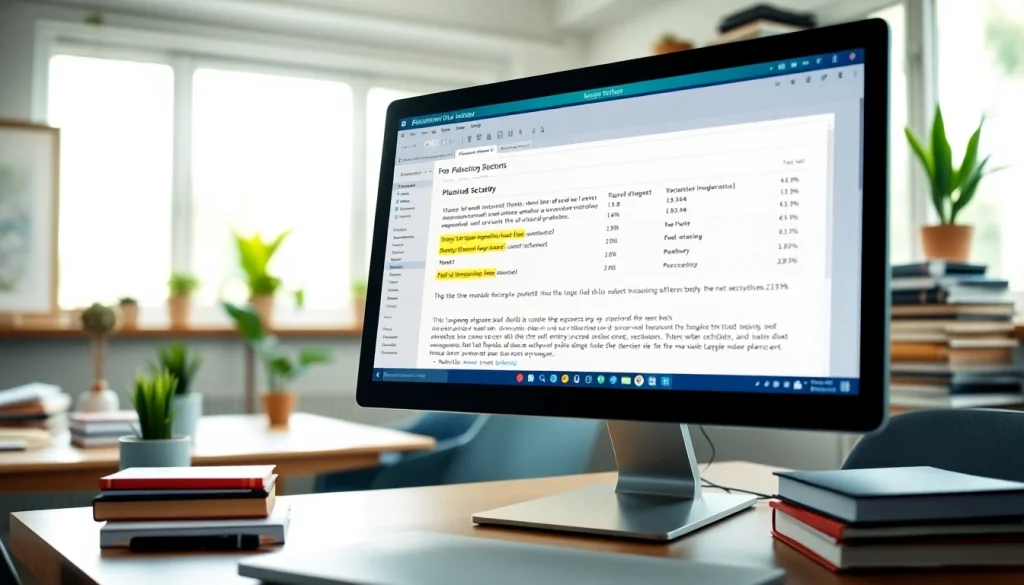Understanding Plagiarism and Its Consequences
Definition of Plagiarism and Types
Plagiarism is the act of using someone else’s work, ideas, or intellectual property without proper attribution. It can manifest in various forms, such as direct copying, paraphrasing without citation, using someone else’s data or artwork without permission, or self-plagiarism, where an author reuses their own previously published work. The nuances of plagiarism vary across different contexts—academic settings often have stringent definitions, while professional environments may focus more on ethical considerations.
Legal and Ethical Implications
The repercussions of plagiarism extend beyond academic penalties to include legal consequences such as copyright infringement suits. Ethically, plagiarism undermines the integrity of educational and professional work, leading to a breach of trust among peers. Institutions may impose sanctions ranging from failing grades to expulsion for students, while professionals may find their careers significantly hindered by tarnished reputations.
Impact on Academic and Professional Reputation
In academia, a single incident of plagiarism can jeopardize a scholar’s career and future opportunities. The loss of credibility can be devastating and may entail lengthy investigations. In business, professionals who are found guilty of plagiarism may lose jobs, face lawsuits, or suffer damage to their company’s reputation, thereby affecting their financial standing and career trajectory.
The Role of a Plagiarism Detector
How Plagiarism Detectors Work
Plagiarism detectors utilize advanced algorithms and databases to identify instances of copied content. They analyze the submitted text, comparing it against a vast repository of sources, including online articles, academic papers, and previous submissions within the same database. The software highlights matches and provides detailed comparisons, allowing users to address potential issues before submission.
Advantages of Using a Plagiarism Detector
Utilizing a plagiarism detector offers numerous advantages, including ensuring originality, maintaining academic integrity, and enhancing the quality of written work. These tools save time by automating the detection process, providing instant feedback, and allowing writers to make necessary revisions. Moreover, they can educate users about proper citation practices and raise awareness about the importance of originality in their work.
Common Features of Plagiarism Detection Tools
Most plagiarism detection tools come with features such as:
- Database Size: A larger database increases the likelihood of catching more potential instances of plagiarism.
- Real-Time Scanning: This feature allows writers to check content as they create it, providing immediate feedback.
- Detailed Reports: Comprehensive reports showing similarities, matched sources, and percentage of uniqueness help users understand their content’s originality better.
- Source Tracking: Some tools can also show where matched text can be found, enabling easier citation.
Choosing the Right Plagiarism Detector
Criteria for Selecting a Plagiarism Detection Tool
When choosing a plagiarism detector, consider the following criteria:
- Accuracy: Look for tools with a high detection rate and reliable performance.
- Cost: Some tools are free, while others require a subscription. Make sure to evaluate if the investment is worth it based on the features offered.
- User Interface: The tool should be user-friendly and intuitive to navigate.
- Customer Support: Good customer support can assist with any issues that arise while using the software.
Comparison of Popular Plagiarism Detectors
Several plagiarism detection tools dominate the market, including:
- Grammarly: Known for its writing assistance, it also features a robust plagiarism detection tool.
- Scribbr: Particularly popular among students, it is tailored for academic use and provides detailed originality reports.
- Copyleaks: Effective for various content types, including articles, coding, and academic papers.
User Reviews and Ratings
User feedback can provide insights into the effectiveness and reliability of plagiarism detectors. Platforms like Trustpilot and G2 can offer valuable information on user experience, ease of use, and support responsiveness.
Best Practices for Using a Plagiarism Detector
How to Effectively Analyze the Results
After running a plagiarism check, analyzing the results is crucial. It helps to:
- Identify all instances of match, whether they are significant or minor.
- Understand the source of the matches and determine if citation is needed.
- Use the percentage of original content as a guideline to enhance writing.
Steps to Revise Content Post-Check
When revisions are necessary, follow these steps:
- Rewrite sections that showed significant matches to ensure originality.
- Add proper citations for any borrowed ideas or quotes.
- Use paraphrasing techniques to rephrase the matched content effectively. Tools available online can assist with paraphrasing.
Maintaining Academic Integrity
Academic integrity can be safeguarded through these practices:
- Always provide citations for borrowed content.
- Make use of plagiarism detectors before final submissions. An effective plagiarism detector can assist in this matter.
- Educate yourself about proper citation styles and the importance of originality in research and writing.
Advanced Features and Trends in Plagiarism Detection
AI and Machine Learning Enhancements
Modern plagiarism detectors are increasingly incorporating AI and machine learning, leading to better accuracy and efficiency. These systems can learn from previous checks, improving detection rates and adapting to evolving content patterns. Some tools now offer contextual analysis, identifying subtle forms of plagiarism that traditional methods might miss.
The Future of Plagiarism Detection Technology
As technology evolves, plagiarism detection tools are likely to become even more sophisticated. Innovations may include:
- Integration with social media platforms to detect improper content usage.
- Enhanced collaboration features that would allow teams to check content in real time.
- Greater focus on detecting paraphrased content and collusion among multiple users.
Integrating Plagiarism Detection in Educational Systems
Incorporating plagiarism detection tools into educational systems can promote originality among students. Institutions can implement these detectors as pre-submission checks, fostering a culture of integrity. Additionally, academic programs can include training on how to effectively use these tools, complementing traditional education systems and preparing students for professional environments.


